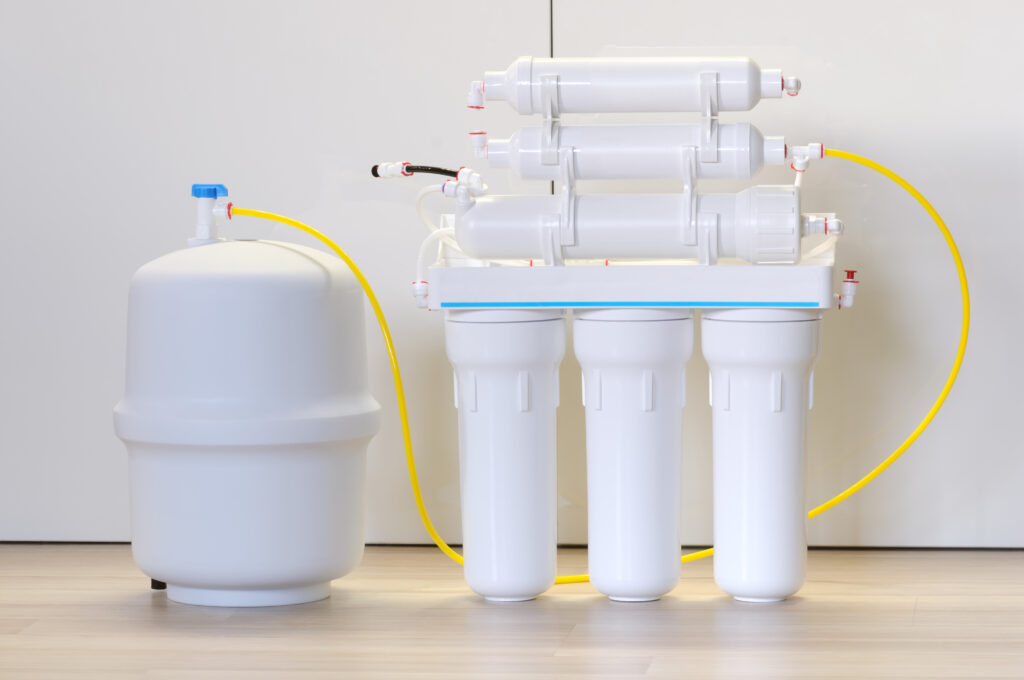In a time where the quality of our water holds paramount significance, an array of filtration methodologies have emerged to ensure the safety and purity of the water we consume. Among these approaches, reverse osmosis has garnered considerable attention. Nevertheless, akin to many popular subjects, it is often accompanied by misconceptions and erroneous beliefs. This article seeks to unravel the truth behind the safety of reverse osmosis water, meticulously dissecting reality from misconception.
A Glimpse into Reverse Osmosis: A Concise Synopsis
Reverse osmosis (RO) stands as a method for purifying water, entailing the expulsion of contaminants, minerals, and impurities by propelling water through a semi-permeable membrane. This unique membrane permits the passage of water molecules while effectively obstructing larger particles, culminating in the generation of purified water on the opposing side. Renowned for its proficiency, RO systems have garnered favor for their ability to furnish us with water that is not only pristine but exudes a refreshing and untainted taste, devoid of undesirable elements….
Is Reverse Osmosis Water Safe?
Is Reverse Osmosis Water Safe? There is a prevailing misconception surrounding the safety of reverse osmosis water that warrants clarification. Concerns have been raised by some individuals regarding the potential lack of essential nutrients or potential health risks due to the removal of minerals and impurities through the RO process. However, it’s crucial to dispel these doubts and affirm that reverse osmosis water is indeed safe for consumption.
Reverse osmosis (RO) systems are meticulously designed to efficiently eliminate a wide spectrum of contaminants, encompassing bacteria, viruses, heavy metals, and various impurities. While it holds true that minerals such as calcium and magnesium are also filtered out during this process, it’s important to recognize that these minerals are not the primary sources of our dietary nutrient intake. Our bodies typically derive essential minerals from a well-rounded diet, emphasizing that water is not the sole or significant source of these nutrients.

Dispelling Myths: The Truth About Reverse Osmosis
Let’s address some common myths and misconceptions surrounding reverse osmosis water safety:
Myth: Reverse Osmosis Water is Acidic and Harmful
Fact: Reverse osmosis water is typically slightly acidic, but this does not pose a health risk. The pH of water can vary, and a slightly acidic pH is not harmful to most people. Our bodies have mechanisms to maintain pH balance, and the consumption of slightly acidic water is not a cause for concern.
Myth: Reverse Osmosis Removes Essential Minerals
Fact: While reverse osmosis does remove minerals like calcium and magnesium, they are not the primary sources of these nutrients in our diet. A well-balanced diet provides us with the necessary minerals, and the absence of these minerals in RO water does not lead to deficiencies.
Myth: RO Water is “Dead” Water
Fact: Some individuals claim that RO water is “dead” water because it lacks minerals. However, water molecules themselves are not living entities, and the absence of minerals does not render water “dead.” RO water is still a solvent and a carrier of essential functions within our bodies.
Ensuring Optimal Safety and Quality
To ensure the optimal safety and quality of reverse osmosis water, it’s important to invest in a high-quality RO system and follow maintenance guidelines. Regularly replacing filters and membranes, as recommended by the manufacturer, helps maintain the effectiveness of the system and ensures that contaminants are properly removed.
Additionally, if you have specific health concerns or preferences, you can consider remineralization options to add back essential minerals to the water after the reverse osmosis process. Many RO systems offer the ability to incorporate remineralization cartridges or post-filters to achieve a desired mineral content.
The Bottom Line: Decoding Reverse Osmosis Water Safety
In conclusion, reverse osmosis water is indeed safe for consumption and plays a crucial role in providing clean, purified drinking water. The concerns about mineral removal and acidity are often based on misconceptions and myths that can be addressed with accurate information. It’s important to recognize that while reverse osmosis removes minerals, they are not the primary dietary sources of these nutrients. Our bodies obtain essential minerals from a well-rounded diet, making the consumption of RO water safe and beneficial.
When considering a reverse osmosis system for your home, opt for a reputable brand and ensure proper maintenance to uphold the system’s efficiency. By separating fact from fiction and understanding the science behind reverse osmosis, you can confidently embrace this method as a reliable way to enjoy clean and refreshing water without compromising your health or well-being.


